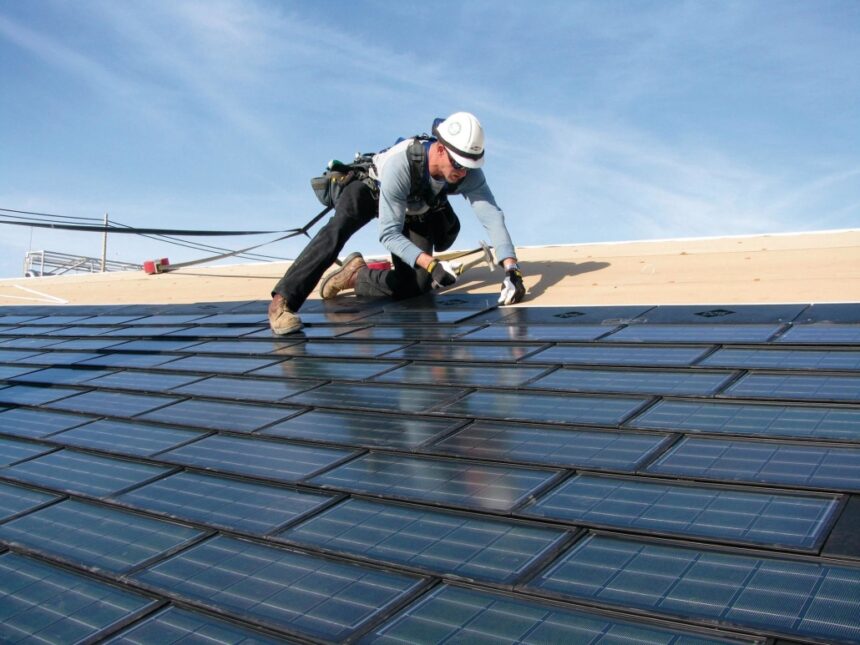Roof maintenance is an essential aspect of preserving the structural integrity and longevity of a building. Regular maintenance helps identify potential problems before they escalate into costly repairs and ensures that the roof continues to perform its primary function of protecting the building against environmental elements. We will explore the various facets of roof maintenance services, including the importance of regular inspections, common issues addressed during maintenance, and how professional services can manage these tasks effectively. Understanding the components of roof maintenance will enable homeowners and building managers to make informed decisions about the care and upkeep of their roofs.
Common Roofing Issues and Maintenance Solutions
Several common issues can affect a roof’s condition and lifespan, including moss and algae growth, pooling water, damaged shingles, and blocked drainage systems. Each requires specific maintenance solutions to prevent long-term damage to the roofing system.
Moss and algae are particularly prevalent in areas with cool, moist climates. If left untreated, moss can grow under shingles, lifting them and making them more susceptible to wind damage and leaks. During maintenance, professionals may apply moss-killing chemicals and gently remove the moss to prevent damage to the shingle surface.
Pooling water, often caused by improper drainage, can lead to severe problems, including leaks and structural damage if the water seeps into the roof substrate. To address this, maintenance crews ensure that the roof’s pitch and drainage systems are functional and free of obstructions. They may also recommend structural adjustments if persistent pooling is observed.
Damaged or missing shingles can compromise the roof’s ability to repel water and lead to leaks. Maintenance involves replacing these shingles and checking for underlying damage to the roofing felt or other materials. Regular inspections help to spot these issues early, allowing for timely repairs that maintain the roof’s integrity.
Lastly, blocked gutters and downspouts can prevent proper water drainage, causing overflow and potential water damage to the roof and building’s foundation. Cleaning gutters and repairing any drainage system damage are typical solutions provided during regular roof maintenance.
Benefits of Professional Roof Maintenance Services
Opting for professional roof maintenance services offers numerous benefits, including expert assessments, comprehensive care, and safety. Professionals have the knowledge and tools to accurately assess a roof’s condition and identify issues that may not be obvious to the untrained eye. Based on their findings, they can perform detailed inspections and recommend appropriate, effective solutions.
Professional services also provide comprehensive care that goes beyond simple repairs. They offer preventative maintenance measures, such as sealing and waterproofing, which can significantly extend the roof’s life. These measures are tailored to the roof’s specific needs based on the material, age, and local environmental conditions.
Safety is another critical benefit of professional roof maintenance. Roof inspections and repairs can be hazardous, particularly on steep or high roofs. Professional roofers are trained to navigate these dangers safely and are equipped with the necessary safety gear to prevent accidents. This not only ensures the safety of the workers but also protects homeowners and building managers from liability issues.
Additionally, many professional services offer maintenance contracts that can provide ongoing care at a predictable cost. These contracts often include regular inspections, scheduled maintenance, and sometimes, emergency priority service. Such arrangements can offer significant savings over time, as regular upkeep helps avoid more extensive and expensive repairs.
Choosing a Roof Maintenance Service Provider
Selecting a reliable roof maintenance service provider is crucial for effective and efficient maintenance. When choosing a provider, several factors should be considered, including the provider’s reputation, experience, licensing, and insurance coverage. It is beneficial to choose a provider with a solid track record of reliability and good customer reviews, as this indicates a history of providing satisfactory service.
Experience dealing with the specific roof material used on your building is also important. Different materials require different maintenance approaches, and expertise in handling your particular type of roof ensures that the maintenance team will effectively identify and solve issues specific to that material.
Licensing and insurance are non-negotiable aspects when hiring a service provider. Ensure that the company is licensed to operate in your area and carries adequate insurance to cover any accidents or damage that might occur during their work. This protects the property owner and the workers and ensures that mishaps are properly managed.
Finally, consider the range of services offered. A provider that can offer a comprehensive maintenance package, including regular inspections, emergency repairs, and preventative treatments, can be more effective than one that specializes in occasional repairs. Additionally, look for companies that provide clear, detailed reports of their inspections and straightforward advice on any required maintenance, as this transparency helps build trust and ensure that you are well informed about the condition of your roof.






